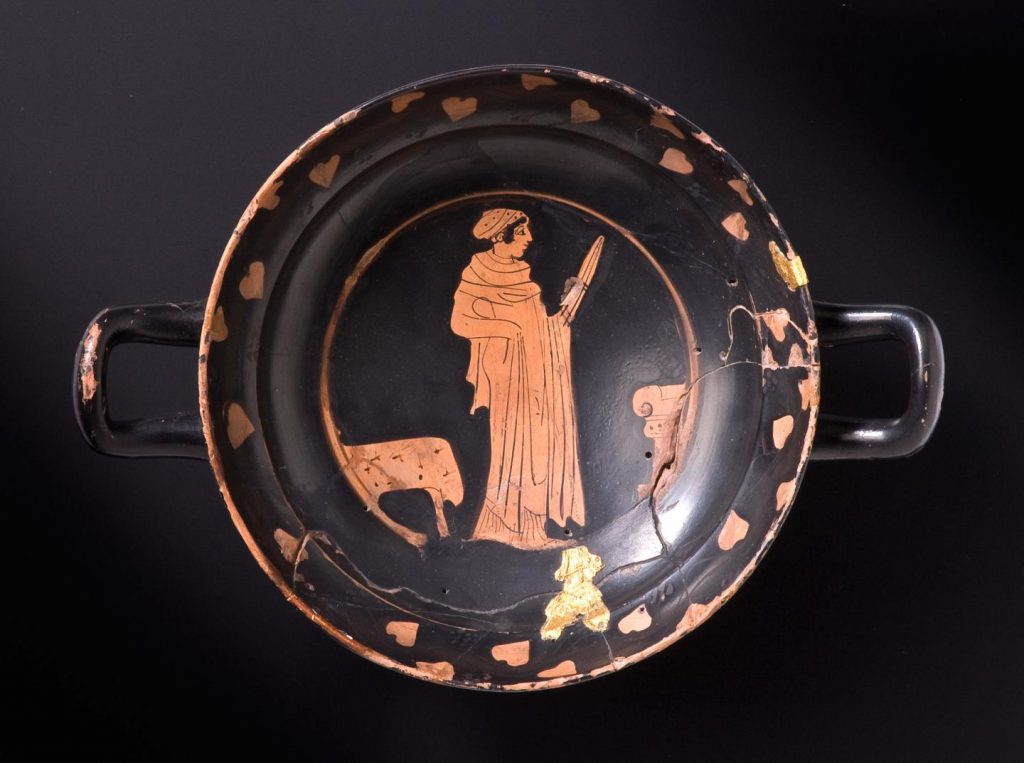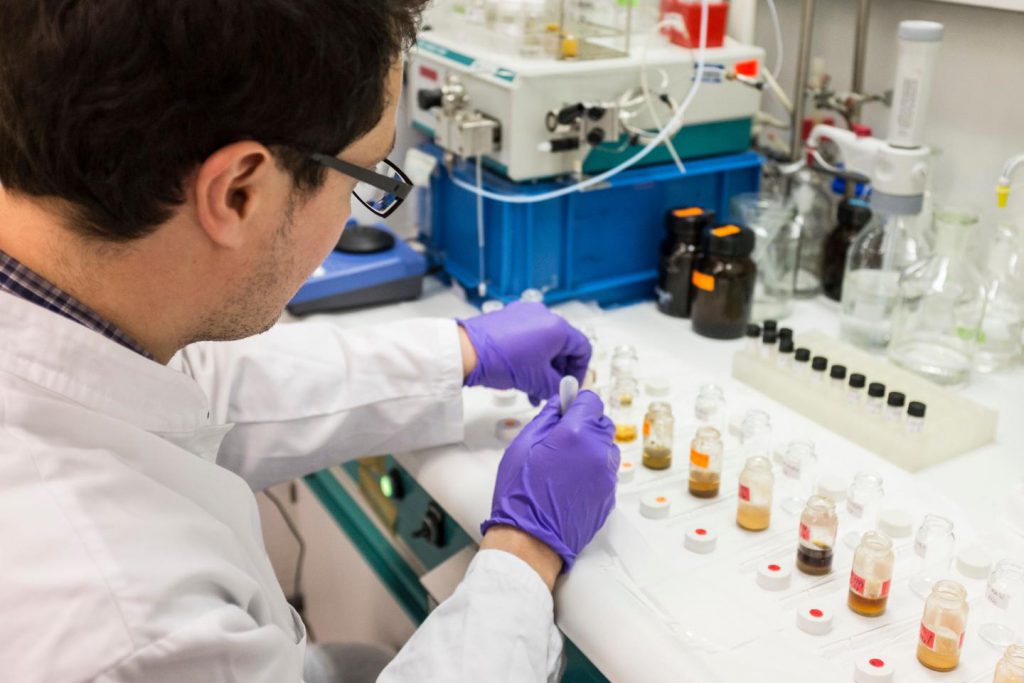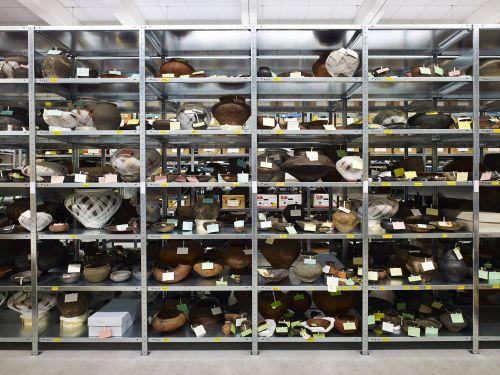Archaeology — what the Celts drank

Research carried out by an international team led by scientists from Ludwig-Maximilians-Universitaet (LMU) in Munich and the University of Tübingen reveals aspects of the drinking and dietary habits of the Celts, who lived in Central Europe in the first millennium BCE.
The authors of the new study analyzed 99 ceramic drinking vessels, storage and transport jars recovered during excavations at Mont Lassois in Burgundy. This was the site of a fortified ‘princely’ settlement of the Early Celts. The finds included pottery and bronze vessels that had been imported from Greece around 500 BCE. “This was a period of rapid change, during which vessels made in Greece and Italy reached the region north of the Alps in large numbers for the first time. It has generally been assumed that this indicates that the Celts began to imitate the Mediterranean lifestyle, and that only the elite were in a position to drink Mediterranean wine during their banquets,” says LMU archaeologist Philipp Stockhammer, who led the project. “Our analyses confirm that they indeed consumed imported wines, but they also drank local beer from the Greek drinking bowls. In other words, the Celts did not simply adopt foreign traditions in their original form. Instead, they used the imported vessels and products in their own ways and for their own purposes. Moreover, the consumption of imported wine was apparently not confined to the upper echelons of society. Craftsmen too had access to wine, and the evidence suggests that they possibly used it for cooking, while the elites quaffed it in the course of their drinking parties. The study shows that intercultural contact is a dynamic process and demonstrates how easy it is for unfamiliar vessels to serve new functions and acquire new meanings.”

Chemical analysis of the food residues absorbed into the ancient pots now makes it possible to determine what people ate and drank thousands of years ago. The group of authors based at the University of Tübingen analyzed these chemical fingerprints in the material from Mont Lassois. “We identified characteristic components of olive oil and milk, imported wine and local alcoholic beverages, as well as traces of millet and beeswax,” says Maxime Rageot, who performed the chemical analyses in Tübingen. “These findings show that – in addition to wine – beers brewed from millet and barley were consumed on festive or ritual occasions.” His colleague Cynthianne Spiteri adds: “We are delighted to have definitively solved the old problem of whether or not the early Celts north of the Alps adopted Mediterranean drinking customs. – They did indeed, but they did so in a creative fashion!”
###
The results of the study, which forms part of the BEFIM project (Meanings and Functions of Mediterranean Imports in Early Iron Age Central Europe), have just been published in the online journal PLOS ONE. The collaborative investigation was carried out by researchers from LMU Munich, the University of Tübingen, the Württemberg State Museum, the Landesamt für Denkmalpflege beim Regierungspräsidium Stuttgart, the University of Zürich and the University of Burgundy.
Press release from the Ludwig-Maximilians-Universität München
Early Celts in Burgundy appropriated Mediterranean products and feasting practices
Organic residue analysis of imported Mediterranean pottery fragments detects imported olive oil and wine as well as local beers

Early Celts in eastern France imported Mediterranean pottery, as well as olive oil and wine, and may have appropriated Mediterranean feasting practices, according to a study published June 19, 2019 in PLOS ONE, by Maxime Rageot from Ludwig-Maximilians-Universität München and the University of Tübingen, and colleagues.
Hundreds of fragments of imported Mediterranean pottery have been excavated from the Early Celtic hillfort site of Vix-Mont Lassois in Burgundy, France. This study is the first to investigate the impact of these Mediterranean imports and of Mediterranean feasting/consumption practices on Early Celtic culture (7th – 5th century BC), using molecular organic residue analysis techniques. The authors performed gas chromatography and GC-mass spectrometry analyses on organic residues extracted from 99 ceramic fragments found at Vix-Mont Lassois: some from 16 vessels imported from the Mediterranean and some from locally produced vessels from different contexts (elite, artisan, ritual, and military).
The results showed that the imported vessels were not only used for wine drinking as an appropriation of Mediterranean feasting practices, but also to drink local beers spiced with pine resins, in what appears to be an intercultural adaptation. Additional home-grown beverages were also found in local pottery, including what may have been millet-based beer, probably consumed only by low-status individuals, and barley-based beer and birch-derived beverages, which seemed to be consumed by high-status individuals. Local pine resins and plant oils were also identified. Beeswax was present in around 50% of the local pottery vessels, possibly indicating that mead was a popular fermented beverage or that the Early Celts liked to sweeten their beverages with honey.
The authors note that common foods such as wheat, barley and rye might have been present in the vessels but could not be detected by their analysis centuries later. Despite this limitation, this study sheds new light on the role of imported Mediterranean food and drink in helping shape Early Celtic feasting practices and demonstrates the potential of this type of molecular analysis also for other archaeological sites.
The authors add: “The Celts in the Early Iron Age did not just drink imported Greek wine from their imported Greek pottery. They also used the foreign vessels in their own way for drinking different kinds of local beer, as organic residue analysis of ca. 100 Early Iron Age local and Mediterranean drinking vessels from Mont Lassois (France) shows.”
###
Citation: Rageot M, Mötsch A, Schorer B, Bardel D, Winkler A, Sacchetti F, et al. (2019) New insights into Early Celtic consumption practices: Organic residue analyses of local and imported pottery from Vix-Mont Lassois. PLoS ONE 14(6): e0218001. https:/
Funding: MR research was funded by the Deutsches Bundesministerium für Bildung und Forschung (Federal Minstry of Education and Research). The funders had no role in study design, data collection and analysis, decision to publish, or preparation of the manuscript.
Competing Interests: The authors have declared that no competing interests exist.
Press release from the Public Library of Science



